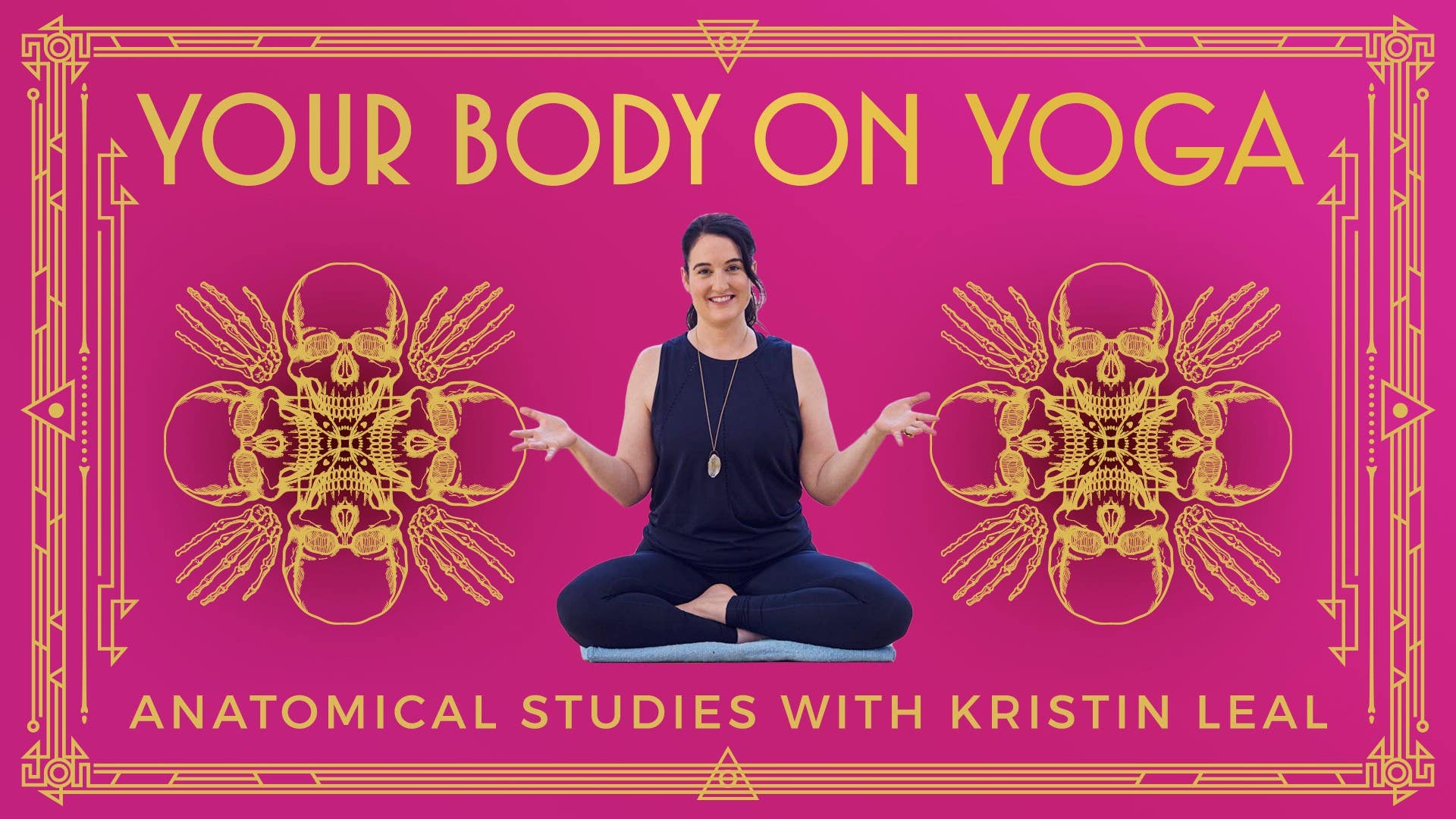Description
Please see attached .pdf below on Lumbar Vertebrae to assist with this class.
About This Video
Transcript
Read Full Transcript
According to studies by the Mayo Clinic, one of the top three reasons why people go see their doctor is lumbar pain, lower back problems. So this is something that we will deal with as humans. And if you're a teacher, this is something that you're going to see come into the room quite a bit as people complaining about lower back pain. So let's look at a lumbar vertebra and talk about what it does, what it doesn't do so well. So here we have an anatomical model of a lumbar vertebra.
It's clean and pretty and white and lovely, but what I'd like to show you is a real lumbar vertebra. Equally as lovely, a little bit more character. So a lumbar vertebra has pretty rectangular spinous processes, and they sit somewhat parallel to one another in these five lumbar vertebra, which means that you can do some movement before the little bones run into one another, before those spinous process beaks run into one another. The transverse processes are pretty short and kind of stubby and also rectangular, so you could do lateral flexion without them running into one another too quickly. The lumbar vertebra, the five lumbar vertebra are actually very mobile.
A lot of flexion possibility about, let's say, 75% of your whole range of flexion happens in those five lumbar vertebra. And 75% of that actually happen in L5S1, the last lumbar vertebra, first sacral vertebra. So the last duck in the row gets all of the weight from the whole torso and upper appendage, so it's really getting the pressure, and then it's highly mobile. And when you have a lot of mobility, you unfortunately have a lot of instability, and a lot of injuries start to pop up. Now we have a really big area on the body of the lumbar vertebra, and so we have a pretty big disc that sits in them.
Because of our poor posture that tends to show up, you can just freeze wherever you are right now and see how you're sitting on the floor or at your desk. Most of us would be sitting on the back of our pelvis with our lumbar spine a little bit in flexion. It's just kind of nature, it's what our default tends to be. I have a camera pointed at me, so I'm sitting up extra proper right now, but if you caught me when no one was licking me too, I would probably be a little bit schlumpy. That unfortunately presses the disc in that precarious place where it's at a little bit more susceptible to poking its head out if injured, right in the path of where those nerves exit out.
So we have a lot of people showing up with disc problems in your lower back. In fact, in all of the vertebra, all the 24 individual vertebra, mostly when you have a disc herniation or a bulging disc, chances are first thing it shows up is in the lower back. The second place it shows up is in the cervical spine, which we'll get to in another episode. So along with this poor posture, we tend to ignore the muscles of the abdomen and the muscles of the pelvic floor, which provide this kind of girdling around the lumbar spine to help keep it in that natural curve, that natural lordotic curve that we have. So in the practice for this section, we're going to learn how to strengthen these regions instead of just asking for endless flexibility in the spine in a yoga practice to look for a balance by adding in more stability to this region.







You need to be a subscriber to post a comment.
Please Log In or Create an Account to start your free trial.